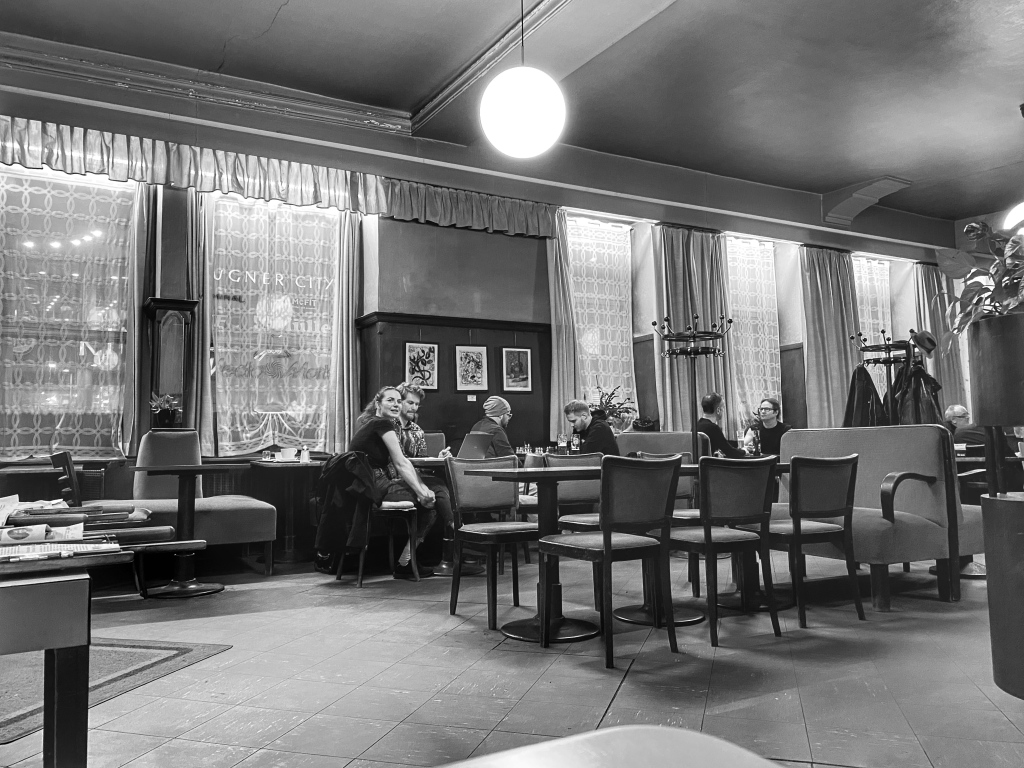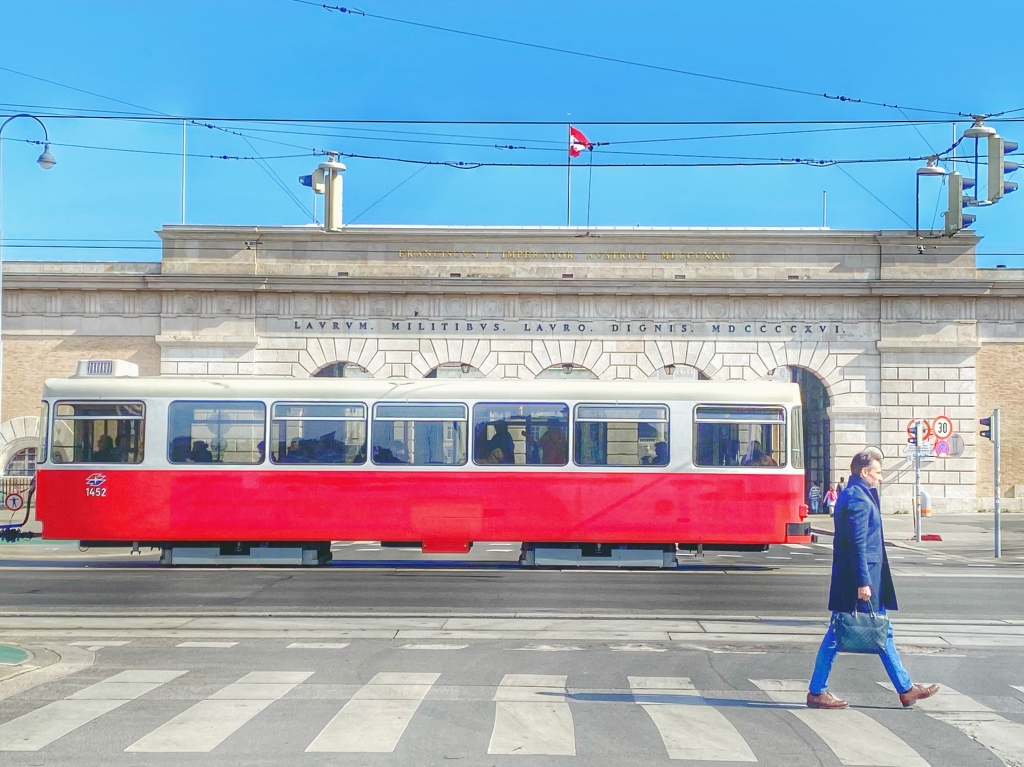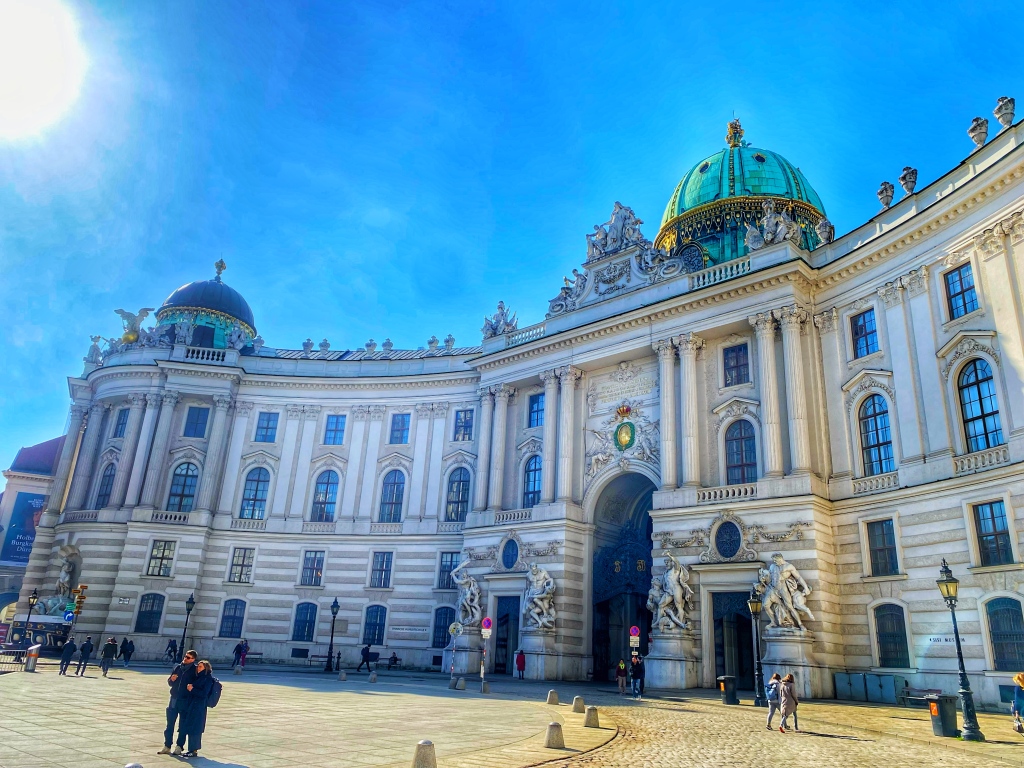If Harry Lime resurfaced in modern-day Vienna, he wouldn’t need to plunge into subterranean sewers to evade being spotted. Nor would the iconic and moody pitter-patter of feet be heard above the din of pre-Easter celebrations.
Austria’s elegant capital – the evocative setting for Orson Welles’ masterpiece The Third Man – was packed with visitors during a crystal-clear spring week just before Easter.
The grand architecture of the Ringstrasse, the Hofburg and the charming lanes of the Old Town are understandable draws for countless tourists of various nations. I knew this before signing up to be part of the marauding horde. However, a love of The Third Man and another factor drew me back to Vienna for the first time in a decade.
Seemingly each year, Vienna tops the list of the most liveable cities. I wanted a relaxing break and where better to disappear into the background than this celebrated city?
As such, I chose the suburban neighbourhood of Margareten as my base. Cupped on its western and southern sides by the infamous multi-carriageway ‘gürtel’, it was still within easy reach of the Old Town while being anonymous enough for a solo traveller to hopefully blend in. Despite having a week-long transport pass (the same price for three days or seven days, it seemed) I opted to an aimless walk on the first night.
Mariahilf has a reputation for vibrancy. But more on that later. At this stage I was content with getting my bearings and wandering aimlessly through streets bustling with people quietly going about their early-evening business. As well as a blend of elegant and shabby Vienna Secession architecture, one thing caught my eye.
A 150ft former World War Two anti-aircraft flak tower, now adorned with a triangular glass frontage, is the Haus des Meeres. This urban aquarium contains more than 10,000 aquatic beings and I was tempted to go in. However, as with most attractions, I walked by.
Barnabitengasse, just off the aquarium-dominated park, revealed a glimpse of old Vienna. A cobbled street leading up to the attractive domes of the 17th-century Mariahilf Church, outside of which stands a statue of Joseph Haydn.
While Mariahilf and its surrounding suburbs might be the newer areas of Vienna, there are historic snapshots available around unassuming corners. A narrow street with trams clanking along it, Siebensterngasse recalls 1940s Vienna, but it is a side street that transports you back further. Spittelberg is utterly charming. Cobblestone streets open on to small squares with historic fountains and lined by picturesque old houses. It has great character and, although quiet at the time, there was a gentle hubbub from the kitchens of a handful of restaurants nearby.
The Viennese suburbs were attractive and much quieter than the city’s illustrious centre, but they also drew crowds – albeit of a completely different demographic. Vienna’s Old Town was packed with tourists self-kettling from edifice to edifice. In the suburbs, the crowds could only be found after dark and only through easily missable doorways. These cafés were, again, very different to their grand, central counterparts. Exteriors often scrawled in graffiti and with little to entice the passer-by inside, a bit of research was the only way to know they were worth going in.
Café Kreisky near the Old Town and Café Habakuk not far from my base were two I went in on the first night. Incredibly laid-back and with a younger crowd, the atmosphere in these was so far removed from the slightly depressed trawl of tourists in the centre. Covering most of the surfaces were stickers and graffito portraying a left-leaning and open-minded clientele. There was a pleasing vibrancy to these shabby cafés that seemed to be a blend of Budapest’s ruin bars and American dive bars.
The only signifier that Café Monic was open was a pink-purple sign started to flicker into life about 6pm. Once in, you were greeted by a hilariously garish poster of former wrestler the Ultimate Warrior. Café Anno brimmed with more tourists than I’d seen outside of the centre, but they were younger and out for a good night.
The outlier was Café Weidinger. A complete throwback to the 1950s, I was welcomed in by a host in full waiter outfit. This surprised me and I wondered if I had made a misstep. However, I realised I hadn’t on asking for a small beer in my unsteady German. Despite only knowing very basic German, most of it has been practiced in Berlin so I have a slight Berliner accent, which no doubt confused the Austrians I spoke to. Anyway: “No. Just one size beer,” came the response. It was large. Sitting there, watching the world go by, from people browsing the paper to a mother and daughter proudly showing off their Stieff teddy bear, and groups of friends playing billiards in the large back room, it was a perfect snapshot of life. While Vienna is famed for its high-class and somewhat staid elegance, these welcoming bars showed another, somewhat more authentic side to the Austrian capital.
But what of Vienna’s Old Town? Could I avoid it? Should I?
Clearly not. Despite the crowds, it is spectacular. The visceral echoes of horse carriages clip-clopping down picturesque side streets, their shadows cast on to aged walls was wonderful. There were spaces where I could avoid the crowds, with Judenplatz and its moving memorials being a particular favourite.


Encircling this grand centre is the Ringstrasse. A world-class collection of museums, opera houses and governmental offices stood proudly on this famed boulevard. It really is majestic, with the gleaming statues atop the opera house, the sprawling Parliament, tranquil parks and the neo-Gothic City Hall. But the building that impressed me most was the 19th-century Votivkirche. Sitting quietly on the north-western corner beside Sigmund Freud Park, this off-white gem peered out amongst the pink blossom, its ornate twin-spired raised to heaven to thank god for saving Emperor Franz Joseph’s life during an assassination attempt by a Hungarian nationalist in 1853.

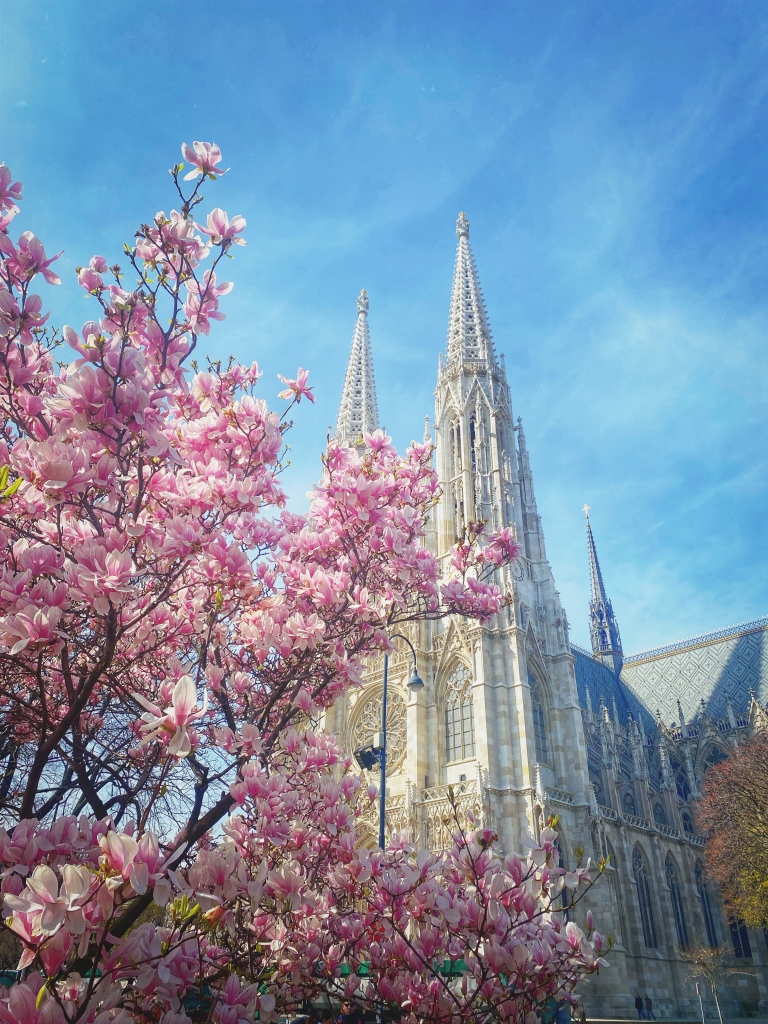
Yes, if you didn’t know, Vienna was home to the Habsburg dynasty for centuries. Their main base, the Hofburg, dominates the central part of the Ringstrasse and stretches along Augustinerstrasse. Apart from the main entrance on Michaelerplatz and the wide approaching avenue from the Ringstrasse, it seems quite understated. With entry to virtually everything in Vienna costing plenty, I was surprised that I could wander through the courtyards, passageways and gardens of the Hofburg at leisure. It had quite the atmosphere and you could imagine well-tailored courtiers and staff shuffling through the white-washed corridors, or stately couples snatching furtive moments hidden from prying eyes.
Appearing unexpectedly at the back of a tour group on Josefplatz, I found myself outside the Habsburg’s Augustinerkirche. Again, the tall, white-washed walls revealed nothing of what was inside, not even a hint this was a church. Coyly, I pushed open an unimpressive door, walked through a vestibule and then found myself in a spectacular, imperial cathedral. Built in the 14th century, it was the imperial family’s parish church, and these solemn surrounds contain a small chapel holding the hearts of Habsburg rulers. In fact, so mournful and sacred are these earnest environs that both Bruckner and Schubert composed masses in F Minor in this church.
As someone who’s bemoaned museums and perceived points of interest on countless occasions, the Augustinerkirche was seriously impressive. As a life-long atheist or at least agnostic, churches have recently revealed a new attraction through their architecture and wallet-friendly admission (free). There’s no doubt they are incredibly impressive structures and their history, such as here at the Habsburg’s parish church, is bewildering. The quantifiable history that’s happened in here and the important figures in whose footsteps I was treading was almost too much to comprehend. This wasn’t myth, this was historical fact.
But away from this holy hagiography, in the square outside, stood actual Harry Lime’s actual apartment! Yes, I was more impressed by a fictional character’s flat from a dramatic film, albeit an incredible one. The Third Man is relatively big business in Vienna and there are numerous reminders of Orson Welles’ seminal post-war thriller. Another one is to the north of the Old City, near the former home of Beethoven. The first time Welles’ character Harry Lime appears is by a doorway on Mölker Steig, a pretty, old, cobbled street.
It was very near here that I paid homage to Vienna’s elegance and enjoyed breakfast at Café Landtmann. On my previous visit, I had brunched in Café Central but that was crazily busy every time I passed, with people queuing outside. I’m not for queuing. However, at the equally grand Landtmann, I was shown straight to a seat with a good view of the dining room. I surveyed the room while reading my book as I tucked waited for my Eggs Hemingway and melange (a Viennese speciality coffee). A tourist family were at the next table, but other than them, it seemed my fellow diners were wealthy retired men or politicians… or spies. My eggs came and I showed my class by poking my fork into a cherry tomato and watching it squirt all over my shirt. Landtmann was like stepping back in time and ascending a fair few social ladders, but it was great. Good food, a sense of occasion and friendly waiters helped the experience.


Buoyed, I went in search of more Third Man locations. Perhaps the most iconic is the Riesenrad, a 212ft Ferris wheel in the Prater Park. This vast city park has a popular fairground and it had just opened for the year when I arrived. Crowds flooded to it and there was a real sense of excitement and seasonal rebirth. I spent a while watching the red carriages of the Riesenrad creak and screech, the Grand Autodrom whirl and spin, and the Liliputbahn chug its way round. The latter is a miniature railway headed by a long-nosed pink engine and was getting a fair bit of custom. As to so many, Prater was a boon to my spirits. There’s also a bright orange, spherical self-declared independent nation, the art space also known as Kugelmugel.

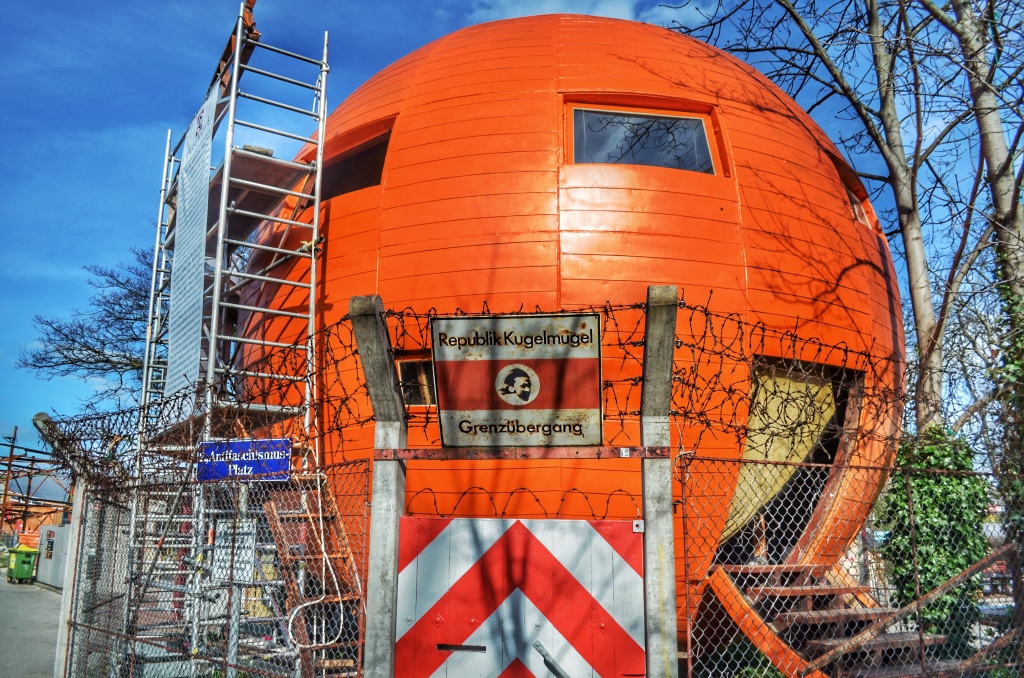
And after visiting Vienna’s three Easter markets, I needed a boon. Two in the centre at Freyung and Am Hof and one at Schönbrunn Palace all quite small and seemingly full of craft stalls – understandably – with a few sausage stands and some massive eggs. I had been to Schönbrunn on my previous visit, and it is beautiful. Walking round its huge gardens on a warm, sunny day while the trees were still mostly bare, I lost myself in the grandeur of what it must have been like to call this place ‘home’. Not even a permanent home, merely a retreat to enjoy in summer.

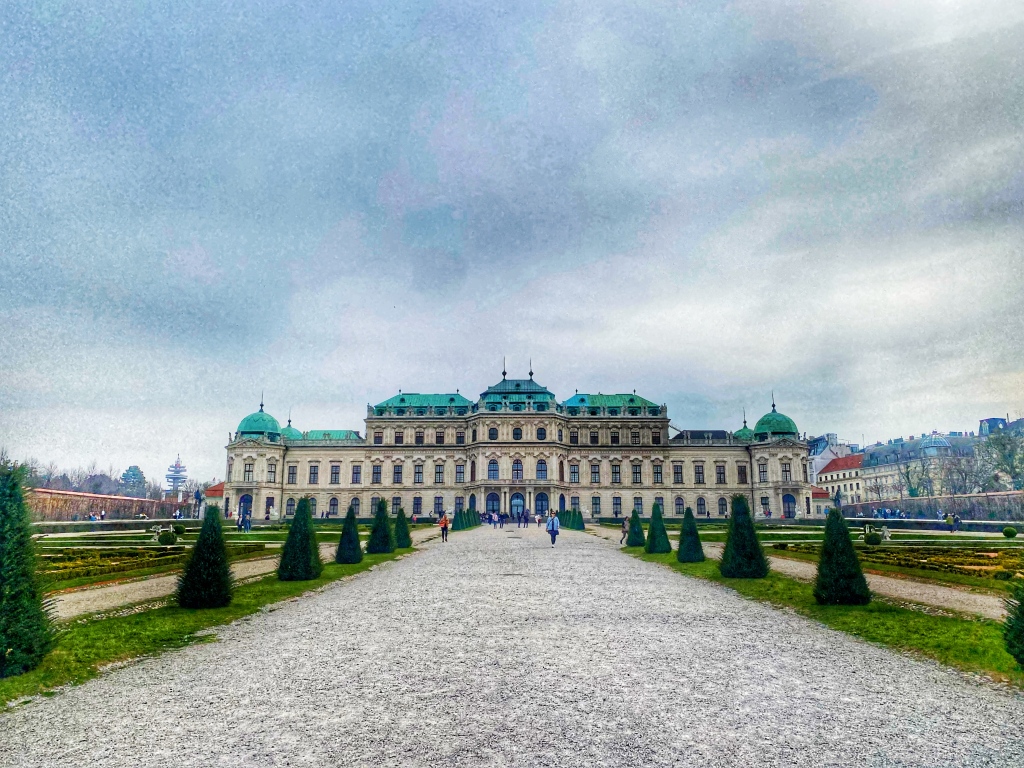
Vienna is unquestionably beautiful. Its rich imperial and cultural history is rightly celebrated. There’s also a slight taste for the unexpected and I really enjoyed tucking in to two massive schnitzels at a restaurant celebrating modern Austria’s icon, Falco. It was here I saw a table of Spanish teenagers getting quite confused about the size of these central European staples.
Despite being rebuffed by the crowds at Café Central and Café Sacher, I did get to enjoy Viennese cake, just not a delicious sachertorte. At Café Jelinek, a suburban hangout unchanged for decades, full of characters from locals to bohemian visitors, I opted for a tasty apple cake and an einspanner. The einspanner is another old Viennese speciality coffee, this time served with lashings of squirty cream on top. It’s quite hard to consume elegantly.
Vienna is beautiful and a fantastic place to visit. Even with swathes of crowds, it’s still possible to disappear and live like a local. However, one of the main reasons I had come here was to go elsewhere.


